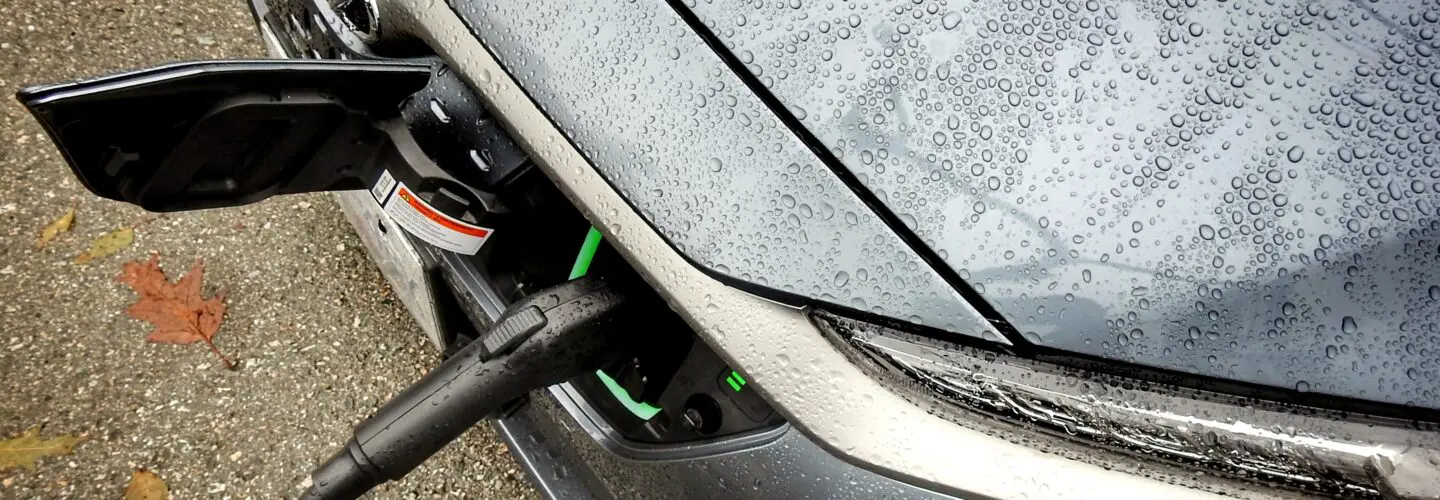Opinion: Through EV policy, Connecticut can right its past air pollution wrongs
As the old saying goes, you can’t design your future without understanding your past. When it comes to charting the course for the future of Connecticut’s transportation system, we must look to our state’s history and learn lessons about the infrastructure that surrounds us and the vehicles that drive through our communities.
Environmental justice issues related to air pollution, including the pediatric asthma crisis in Connecticut’s Black and Latino communities, can be better understood through our state’s troubled history of redlining, urban renewal programs, highway construction, and residential segregation.
In the 1930s, the Federal Home Owners’ Loan Corporation (HOLC) constructed “residential security” maps that color-coded neighborhoods based on the desirability and safety of capital investments. The HOLC made decisions about neighborhood classifications based on race, economic class, and ethnic composition. Neighborhoods that were deemed “riskier” were “redlined” as they were comprised of Black, immigrant, and low-income communities. Redlining set the standards for racial segregation and concentrations of urban disparities, industrial zoning, and future highway construction. Industrial zoning placed heavily polluting facilities, such as industrial plants, major trucking roadways, and shipping ports, in and around redlined neighborhoods.
The Housing Act of 1949 and the 1956 Federal-Aid Highway Act subsidized the construction of highway projects such as the Oak Street Connector in New Haven, where federal money was used to build a mini-highway through downtown and The Hill, destroying the Oak Street neighborhood. The destruction of the Oak Street neighborhood for the development of a mini-highway displaced around 3,000 people, or about 880 families.
The burden of displacement was placed disproportionately along the lines of race, ethnicity, and sexual orientation. Before redevelopment, Oak Street was home to vibrant Black Americans and Jewish, Italian, and Puerto Rican immigrant enclaves. Through the destruction caused by the decisions to develop the Oak Street Connector, many of those displaced moved to The Hill neighborhood, where they continued to fight redevelopment projects.
Displacement for highway construction and industrial development across Connecticut divided communities and laid the groundwork for the entrenchment of some of the nation’s most significant wealth gaps and income inequality. In Hartford, redlining and urban renewal contributed to the deliberate placement of highway I-84 in the North End neighborhood, home to large concentrations of Black and low-income residents.
As neighborhoods were leveled for the development of highways, low-income enclaves and communities of color became subject to decades of airborne pollution from gasoline- and diesel-powered vehicles that transport commuters and goods within and beyond Connecticut. Neighborhoods alongside and downwind of transportation corridors that support industrial facilities are forced to breathe exhaust from the dirtiest vehicles, driving up health disparities.
According to the Union of Concerned Scientists, big trucks and buses make up just 6% of all on-road vehicles in Connecticut but are responsible for more than half of all smog-forming NOx tailpipe pollution.
As attempts to remedy the injustices caused by redlining, urban renewal, and highway construction are underway, such as the City of New Haven’s Downtown Crossing Project and the Hartford 400 plan, addressing the harms to public health caused by tailpipe pollution must remain a key priority. To ensure less pollution in neighborhoods near highways and industrial transportation corridors, our legislators must adopt strong clean cars and trucks standards — Advanced Clean Cars II (ACC II), Advanced Clean Trucks (ACT), and Heavy-Duty Omnibus (HDO) — that have already been adopted by nearly every other state in the region. These clean transportation policies would ensure that sales of new vehicles increase gradually toward 100% zero-emission by 2035.
Clean cars and trucks are not a silver bullet for correcting the injustices of the past and present. Congruent efforts such as promoting reliable and fair transit access, free K-12 transit fares, rail, buses, pedestrian infrastructure, and other forms of mode-shift and mobility to reduce total vehicle miles traveled (VMT) from single occupancy and passenger vehicles, have benefits that would only be amplified by the increased availability of zero-emission and electrified light, medium, and heavy-duty vehicles that ACCII and ACT would introduce.
The ACC II and ACT regulations only affect the sale of new cars — roughly 75% of people buy used.
While the cost of new and used EVs continues to drop year-over-year, affordability concerns are being tackled through the CHEAPR program, which provides incentives on new and used zero-emission vehicles, with additional rebates available for income-eligible individuals. Combined with the $7,500 federal tax credit, Connecticut residents can save up to $11,750 on the purchase of a typical EV.
As a state with a long history of forcing tailpipe and industrial pollution into vulnerable communities, Connecticut has a generational chance to start righting these wrongs by joining with states that are leading the global transition to zero-emission vehicles.
To read the original article from the CT Mirror, click here.




















Share